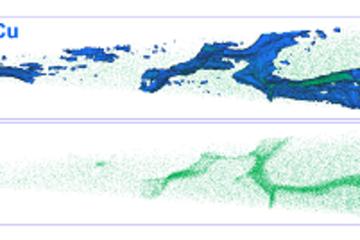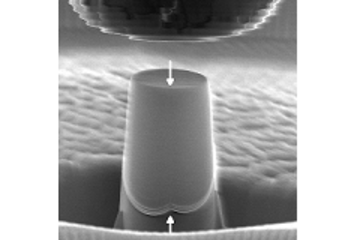All genres
261.
Talk
Ab initio calculation of thermodynamic properties of metals: xc-related error bars and chemical trends. ADIS 2006, Ringberg Castle, Germany (2006)
262.
Talk
Temperature dependent properites of Shape-memory alloys. Physics Seminar of Loughborough University, Loughborough, UK (2006)
263.
Talk
Determination of Thermodynamic Quantities from Ab Initio Methods. WTL Learnshop, Aachen, Germany (2005)
264.
Talk
Ab initio based free energy surfaces: A tool to derive temperature dependent thermodynamic and kinetic parameters. DPG-Jahrestagung, Berlin, Germany (2005)
265.
Poster
A computationally highly efficient ab initio approach for melting property calculations and practical applications. CALPHAD 2024, Mannheim, Germany (2024)
266.
Poster
Ab initio assisted design of quinary dual-phase high-entropy alloys with transformation-induced plasticity. TMS 2018, Phoenix, AZ, USA (2018)
267.
Poster
Interaction of magnetic and lattice degrees of freedom. International Workshop on Ab initio Description of Iron and Steel: Mechanical Properties (ADIS 2016), Ringberg Castle, Tegernsee, Germany (2016)
268.
Poster
The origin of anharmonicity in fcc solids. PSI-K Meeting 2015, San Sebastián, Spain (2015)
269.
Poster
Breakdown of the Arrhenius Law in Describing Vacancy Formation Energies. Nothing is Perfect 2015, Ascona, Switzerland (2015)
270.
Poster
CALPHAD assessments using T > 0K ab initio data: From quasiharmonic to local anharmonic approximation. CALPHAD 2015, Loano, Italy (2015)
271.
Poster
Origin of Beta to Omega Transition Induced by {211}<111> Shear in Ti–Nb-based Alloys. MSE 2014, Darmstadt, Germany (2014)
272.
Poster
Ab initio description of dynamically unstable systems from zero Kelvin up to the melting point. CALPHAD 2014, Changsha, China (2014)
273.
Poster
ω phase accommodated nano-twinning mechanism in Gum Metal: An ab initio study. 3rd International Workshop on Physics Based Material Models and Experimental Observations: Plasticity and Creep, Cesme/Izmir, Turkey (2014)
274.
Poster
Atomic forces at finite magnetic temperatures: Phonons in paramagnetic iron. Calphad XLI, Berkely, CA, USA (2012)
275.
Poster
Atomic forces at finite magnetic temperatures: Phonons in paramagnetic iron. ADIS Conference 2012, Ringberg, Germany (2012)
276.
Poster
New insights into anharmonicity. ADIS 2012: Ab initio Description of Iron and Steel, Ringberg, Germany (2012)
277.
Poster
Ab initio concepts for an efficient and accurate determination of thermodynamic properties up to the melting point. Summer School: Computational Materials Science, San Sebastian, Spain (2010)
278.
Poster
Magnetic contributions to the Thermodynamics of iron and Cementite. 448. WE-Heraeus-Seminar "Excitement in magnetism", Ringberg Castle, Tegernsee, Germany (2009)
279.
Poster
Magnetic contributions to the free energy of iron. ICAMS Scientific and Industrial Advisory Board Meeting, Bochum, Germany (2009)
280.
Poster
Ab initio up to the melting point: Anharmonicity and vacancies in aluminum. International Workshop on Multiscale Materials Modelling (IWoM3), Berlin, Germany (2009)











